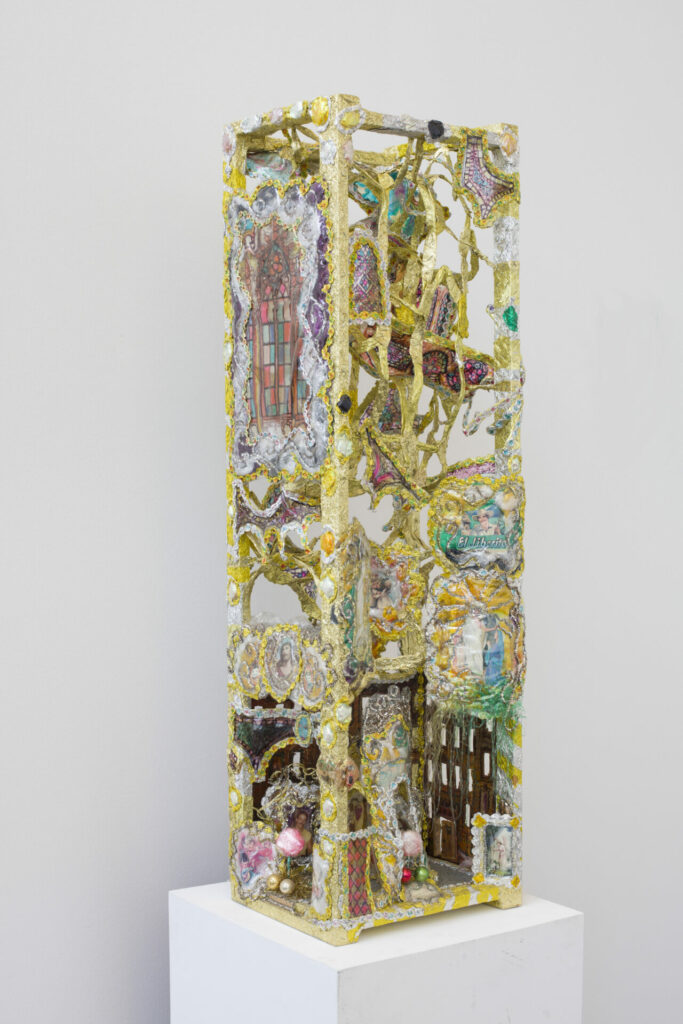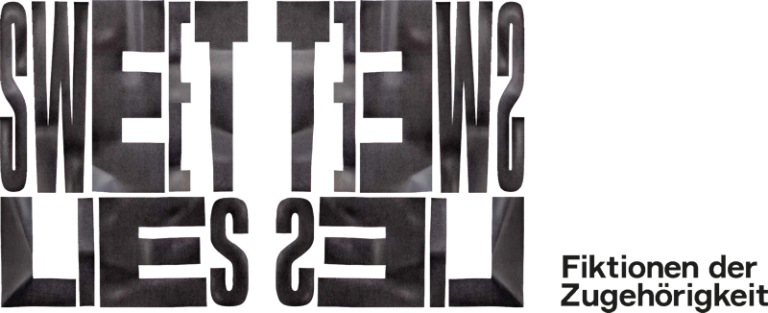Markues
lives and works in Berlin, Germany
Markues, Jubilate Agno, 2021, Ink on Paraglider and ball chains, Courtesy of the artist, © Markues, 2021 / Photos: Simon Vogel
Markues’ paraglider-equipped room is dedicated to the lyricist Christopher Smart (1722-1771) and refers to his poem Jubilate Agno (written 1759-1769, first published in 1939). Smart composed it during a stay for insanity at St. Luke’s Hospital in London. The poem is divided into two sections – Caller and Response. The first section begins with “For” and represents a string of hallucinatory realizations by the lyrical self, whereas the second passage “Let,” preceding the beginning of the line, praises religious ideas. Smart’s poem alternates between religious dramatization and homosexual allusions. The paragliders draped around the space by Markues relate directly to the poem in their coloration as well as through the attached ball chains in the form of embroidered letters (FOR and LET). In the entrance area of the installation, the first umbrella (FOR) hangs limply down on ropes, providing a first visual barrier behind which two watercolors are located. The second glider (LET) frames the back of the room, where it has been loosely attached to the ceiling from wall to wall.
The umbrellas face three of Markues’ watercolors, which are from the series The Troubled Waters of Ethnic Heritage. The long titles of these works are quotations from the environment of the German forced resettlers between 1945 and 1950. These titles have an uncomfortable topicality and conciseness precisely because of their theatricality and pathos. If one takes, for example, They stopped and looked at us, no one wanted these strangers, who also had a different faith, the statement, taken out of context, takes on a new meaning through the global migration movements of people who have fled in recent years. The questions driving Markues in this series are: How does one use artistic means – from a largely privileged reality of life in the middle of Europe – to address issues with a critical Awareness of the problem? How does such a discourse succeed without focusing on one’s own person? In essence, Markues is concerned with investigating whether a space of possibility can exist that – starting from visual art – is characterized by strong stylization, anti-subjective procedures, and deskilling. Here, viewers are offered the opportunity to comprehend the dissolution of the subject without ignoring their own origins. In addition, identity categories can be experienced by viewers in this place.
A work by Thomas Lanigan-Schmidt is placed in the installation by Markues: A Rite of Passage: The Leprechaun (a Mischievous Irish Fairy) and the Puerto Rican Prince, a stele-like work that works heavily with ornamentation, has been placed in the space beneath the paragliders. Moments of recognition and encryption alternate – as they do in Markues. While Lanigan-Schmidt places his ornamentation more strongly in a religious context and thus represents a field of tension between Catholicism and queerness, Markues devotes himself to a string of ornaments that deal with the themes of Gender and origin in color and form. For this purpose, Markues uses, for example, paintings of gliders, decorations of Westerwald stoneware, or patterns of clothing. Ornaments that speak of certain social classes in society. Markues’ gliders also work with the ornament, whereby they elude a readable authorship and follow a non-gender-specific gesture.
in dialogue with

Thomas Lanigan-Schmidt
A Rite of Passage: The Leprechaun (a Mischievous Irish Fairy) and the Puerto Rican Prince, 1974–1985
